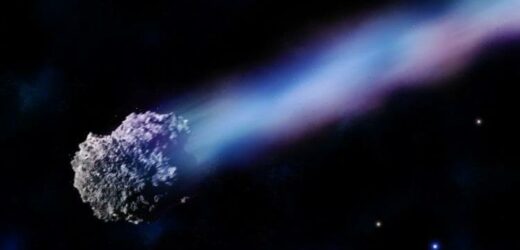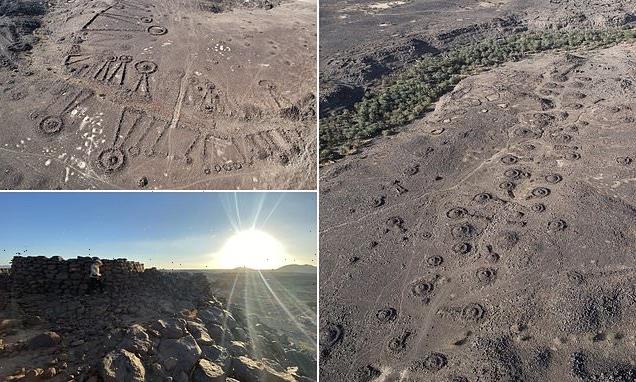NASA test planetary defence spacecraft to divert asteroid's path
We use your sign-up to provide content in ways you’ve consented to and to improve our understanding of you. This may include adverts from us and 3rd parties based on our understanding. You can unsubscribe at any time. More info
The space rock dubbed 7482 (1994 PC1), is over a kilometre wide at an astonishing 1,052m (3,451ft). This monumental size is larger than the Burj Khalifa in Dubai, the biggest building on the planet at 830m (2,723ft). It will be more than five times the Moon’s distance from the planet. NASA’s Asteroid Watch posted on Twitter: “Near-Earth asteroid 1994 PC1 (~1 km wide) is very well known and has been studied for decades by our #PlanetaryDefense experts.
“Rest assured, 1994 PC1 will safely fly past our planet 1.2 million miles away on Tuesday, January 18.”
The asteroid was first discovered way back in 1994 by Robert McNaught at the Siding Spring Observatory in Australia.
The Planetary Defence Coordination Office (PDCO) at NASA monitors activity in the cosmos to find, track, and keep tabs on near-Earth objects.
It explains that Near-Earth objects (NEOs) are asteroids and comets that orbit the Sun like the planets.
Their orbits can bring them near the Blue Planet’s neighbourhood, but that is just within 30 million miles of Earth’s orbit.


Occasionally, asteroids can also make “close approaches” to Earth, but this does not mean they are going to strike.
Most of these objects fly well clear of Earth and NASA charts out their orbits for hundreds of years in advance
This comes as NASA has been testing ways to protect the Earth from potentially hazardous asteroid collisions.
Back in November, the agency launched $330million (£241.79million) Double Asteroid Redirection Test (Dart) probe.
The plan is to crash a robot spacecraft into the Dimorphos asteroid at 15,000 mph to change its path.

NASA say that a successful mission will mean that the Earth could be saved from a future doomsday situation if an Armageddon-style asteroid on a collision-course with our planet.
Kelly Fast, at NASA’s PDCO said: “Dart will only be changing the period of the orbit of Dimorphos by a tiny amount.
“And really that’s all that’s needed in the event that an asteroid is discovered well ahead of time.
“We’re not out of the woods yet, we’ve got to get out to Dimorphos, but this is a huge step along the way.”
While the 7482 asteroid will come zooming past the globe tomorrow, this will not be the first time that a giant piece of space rock gets sent soaring past the planet.
Back in December, an asteroid bigger than the Eiffel Tower was sent racing safely past the Earth.
DON’T MISS
Charles Darwin mystery solved after 140 years with stunning find [REVEAL]
Wuhan lab leak: Scientists change minds after China crackdown [REPORT]
Scientists discover new approach to beat antibiotic-resistant bacteria [INSIGHT]


Asteroid 4660 Nereus passed Earth about 4.6million miles away at a stunning speed of 15,000mph.
While the asteroid zipped past safely, this distance was still classed as “potentially hazardous”.
Professor Martin Barstow, a professor of astrophysics at the University of Leicester, said: “Collectively, asteroids do pose a potential threat, as the dinosaurs found out 63 million years ago.
“Scientists are interested in groups of asteroids for this reason and it is vital that we track them because one day we might find one that could cause a problem, although that prospect is unlikely.
“The things that we are really scared about are the things we don’t yet know anything about.
“That’s why we have initiatives to search space to find these objects and the Double Asteroid Redirect Mission to help protect us in the event that one might collide with Earth.”
Source: Read Full Article


